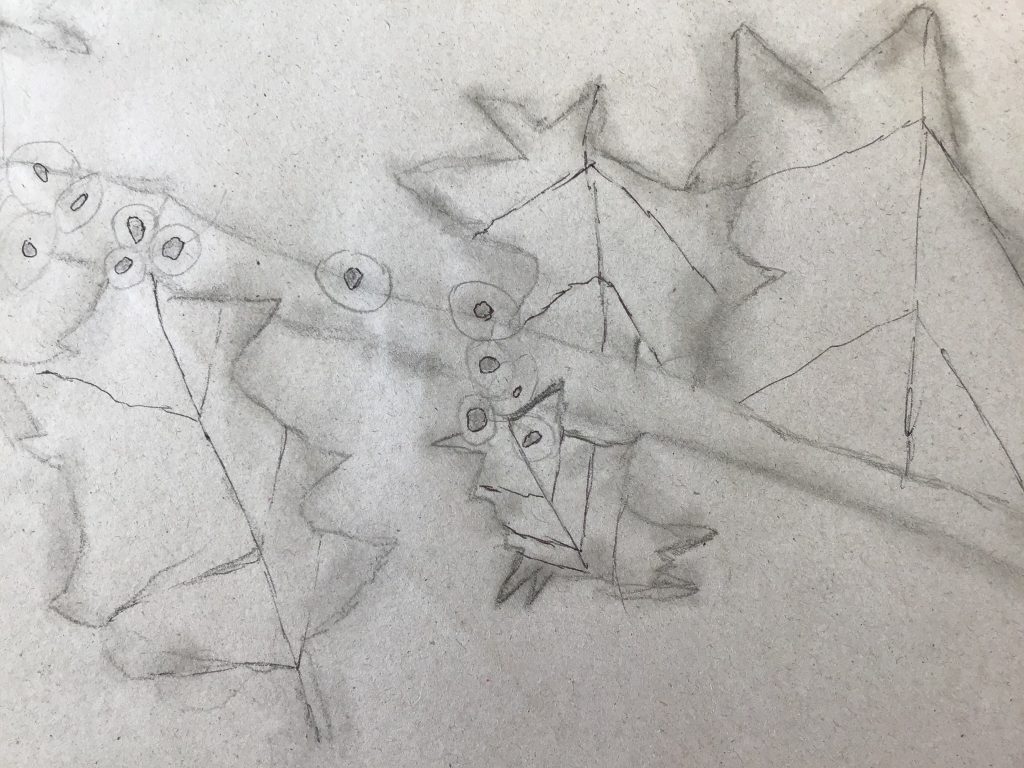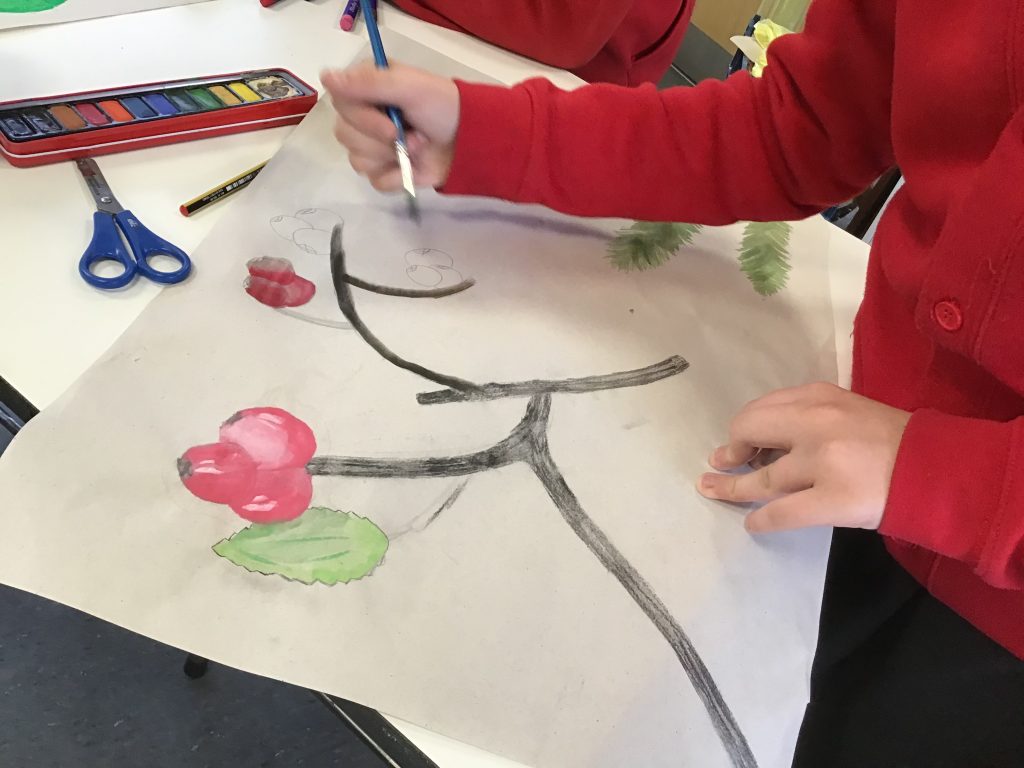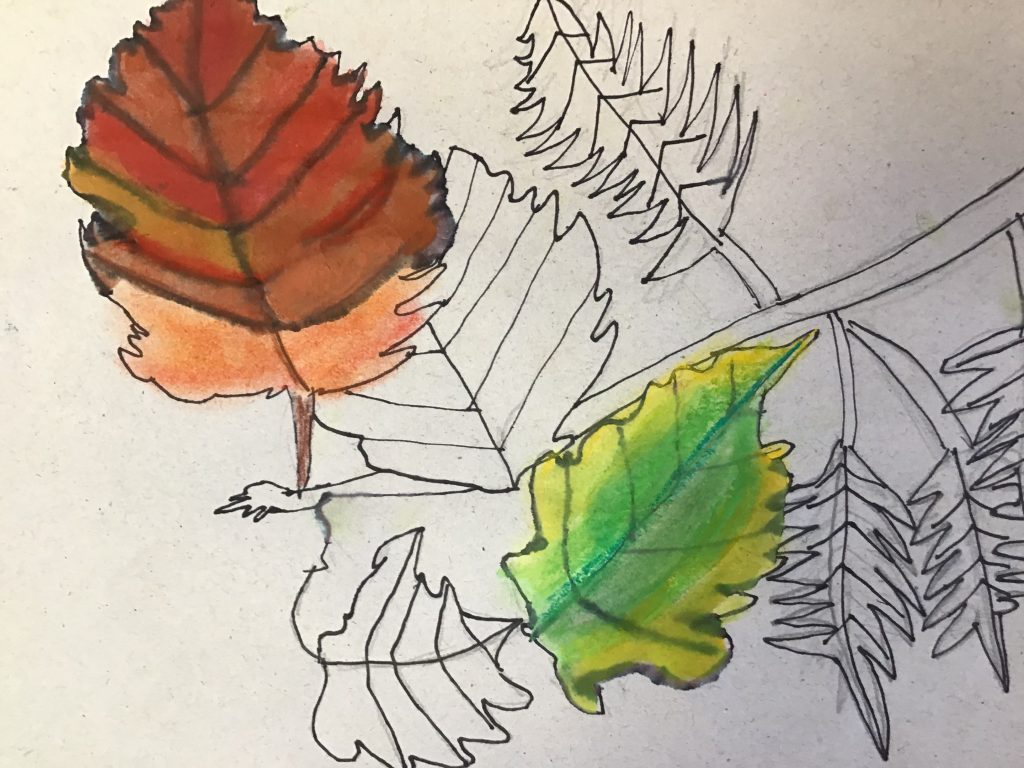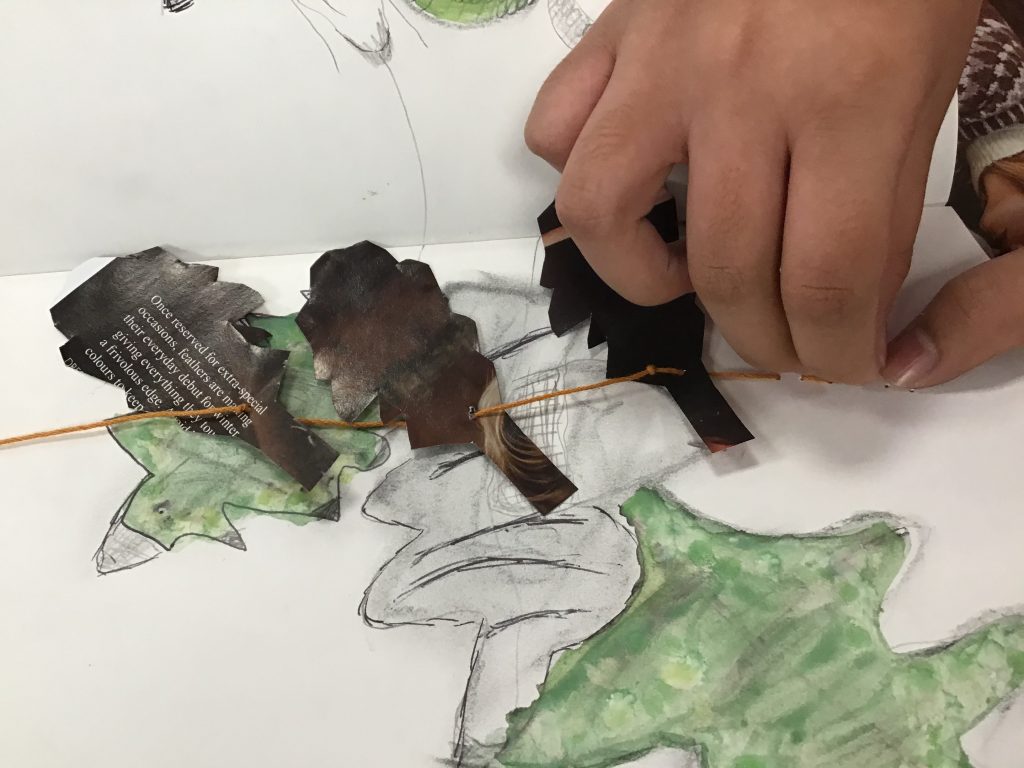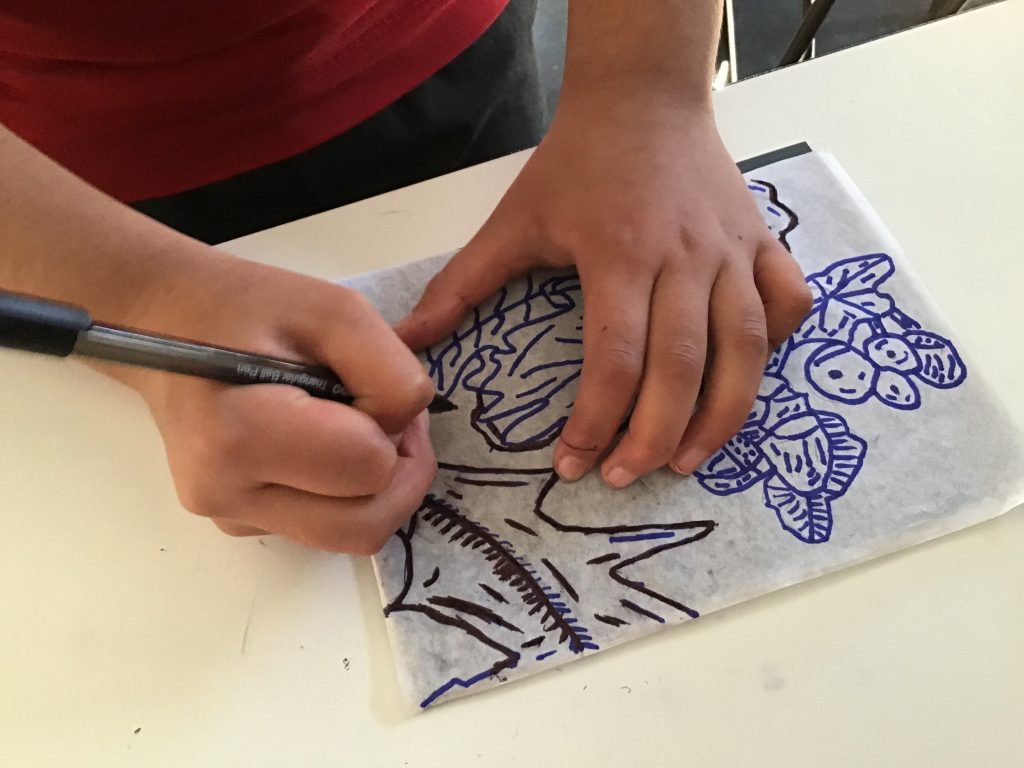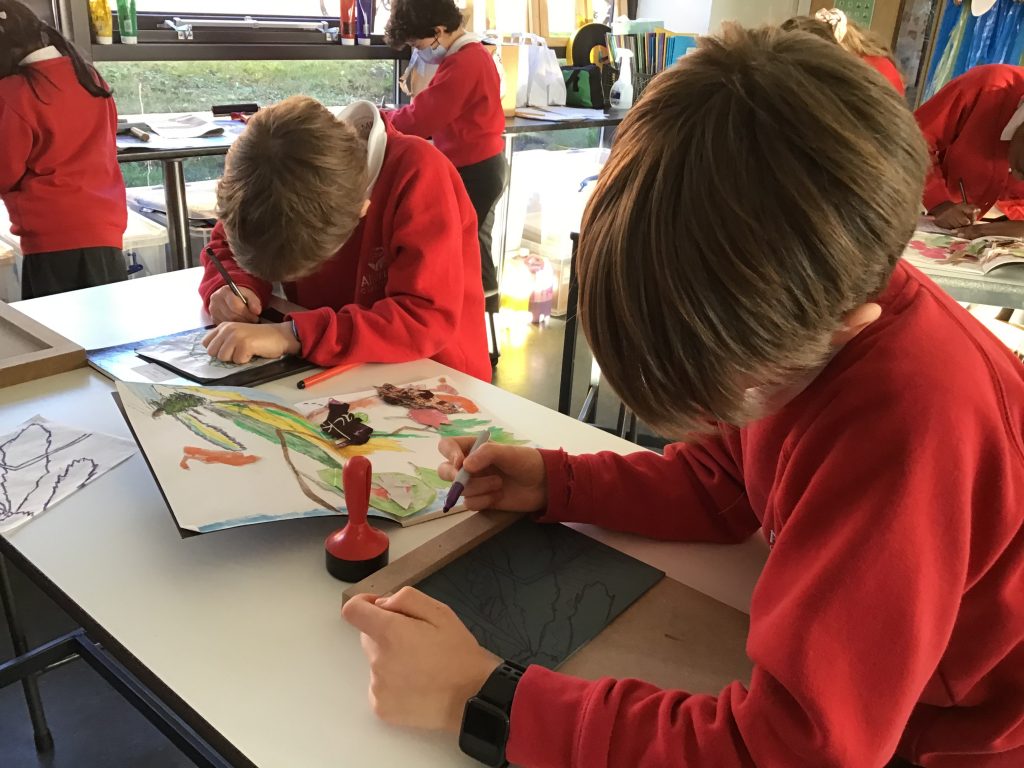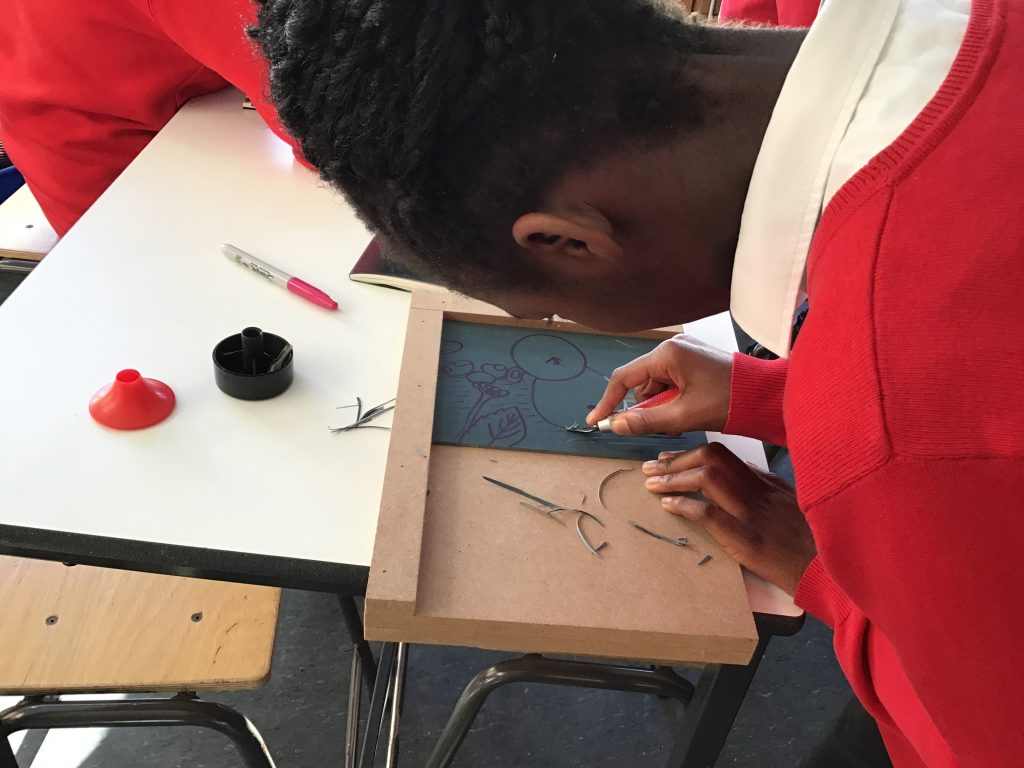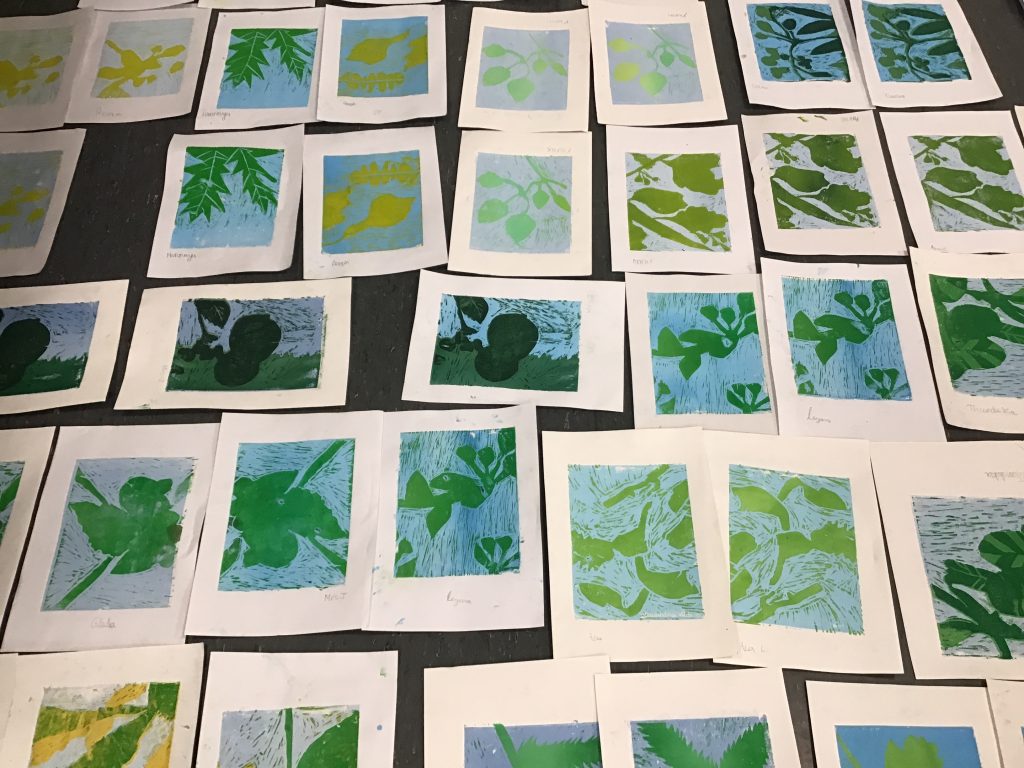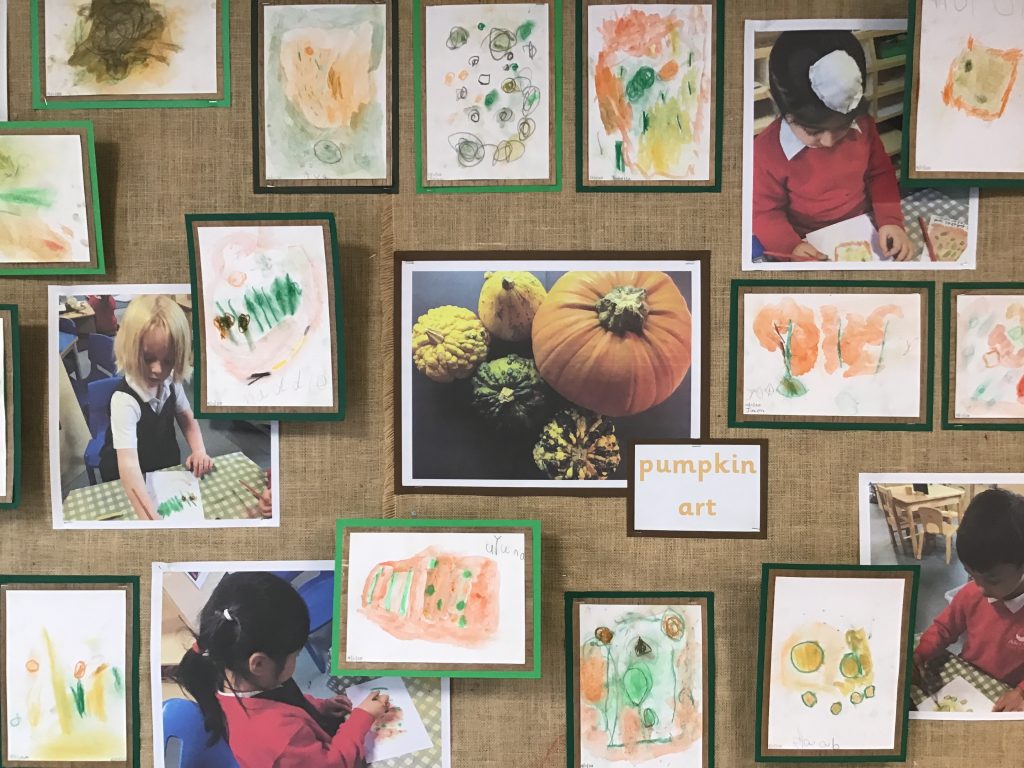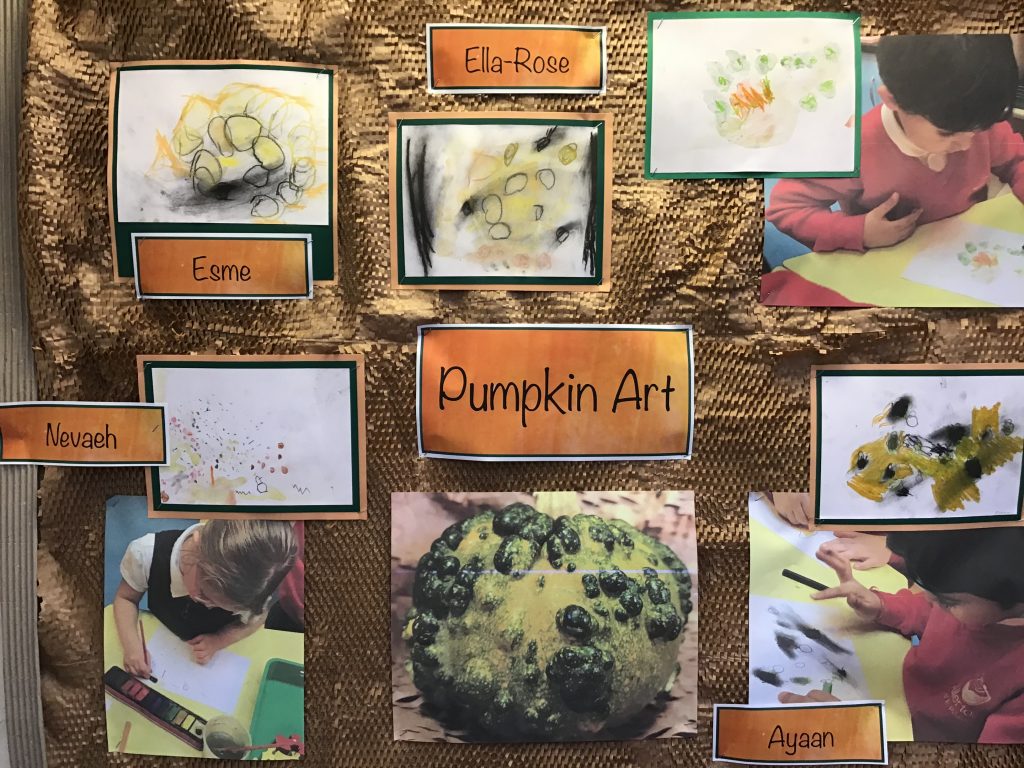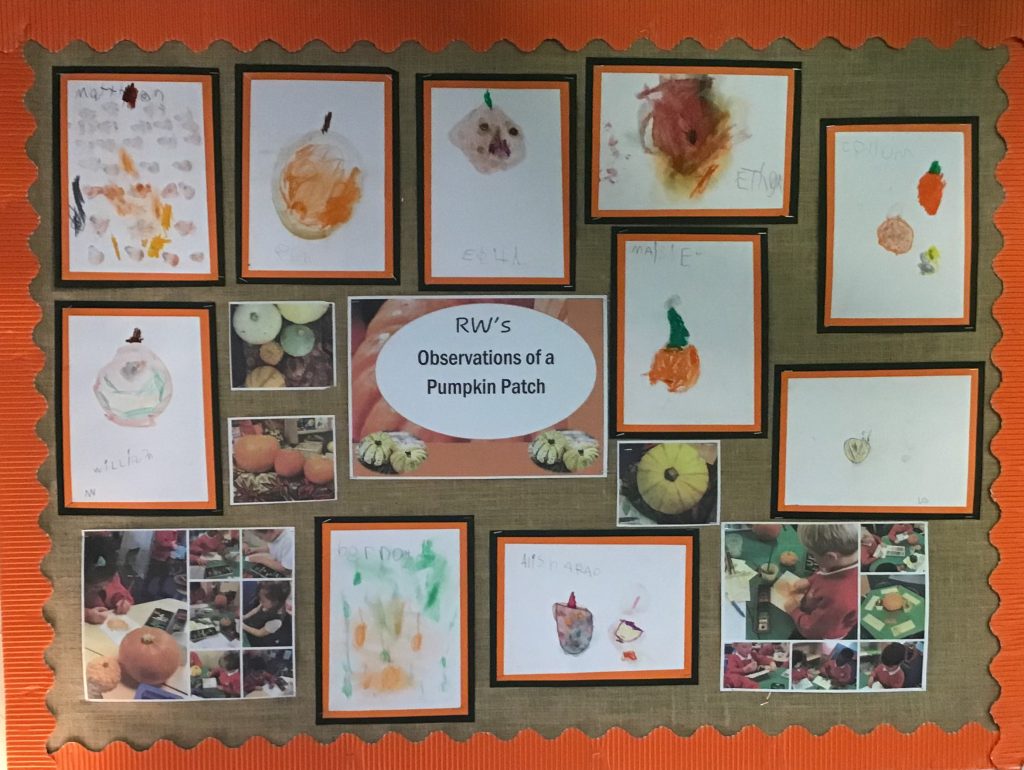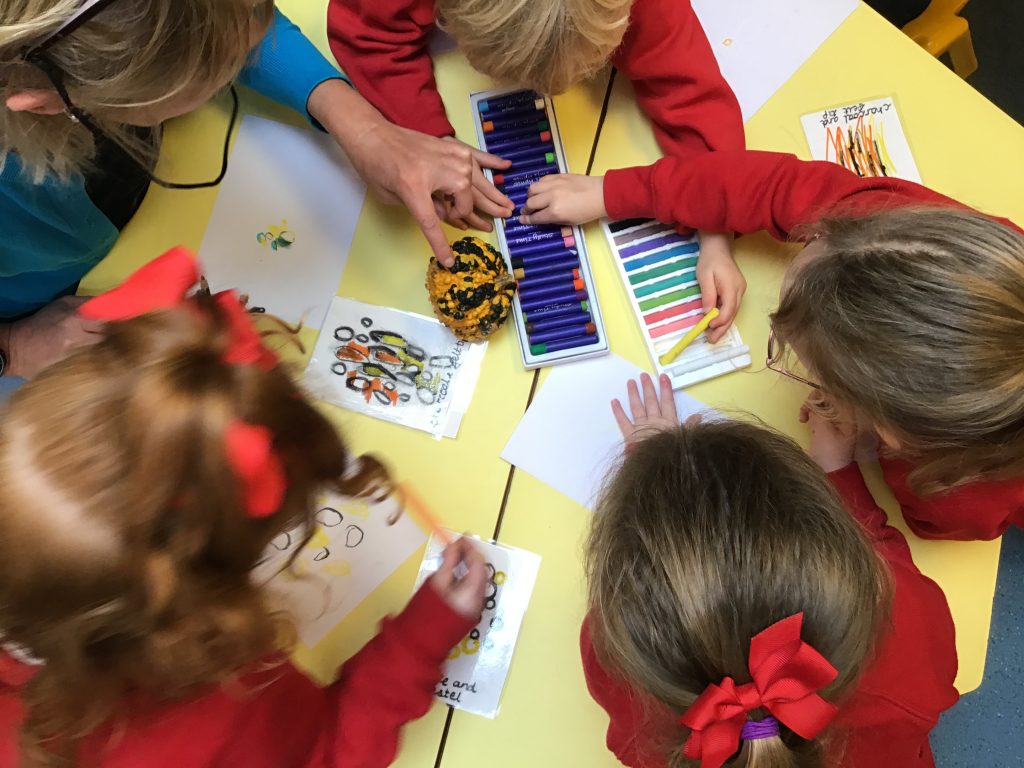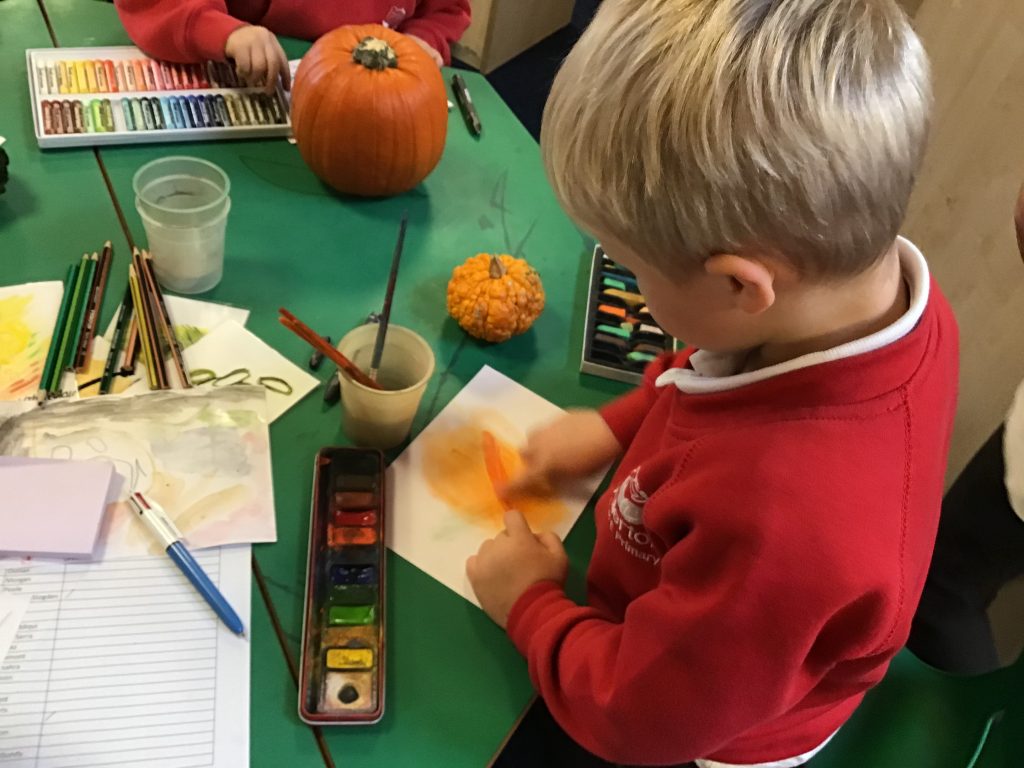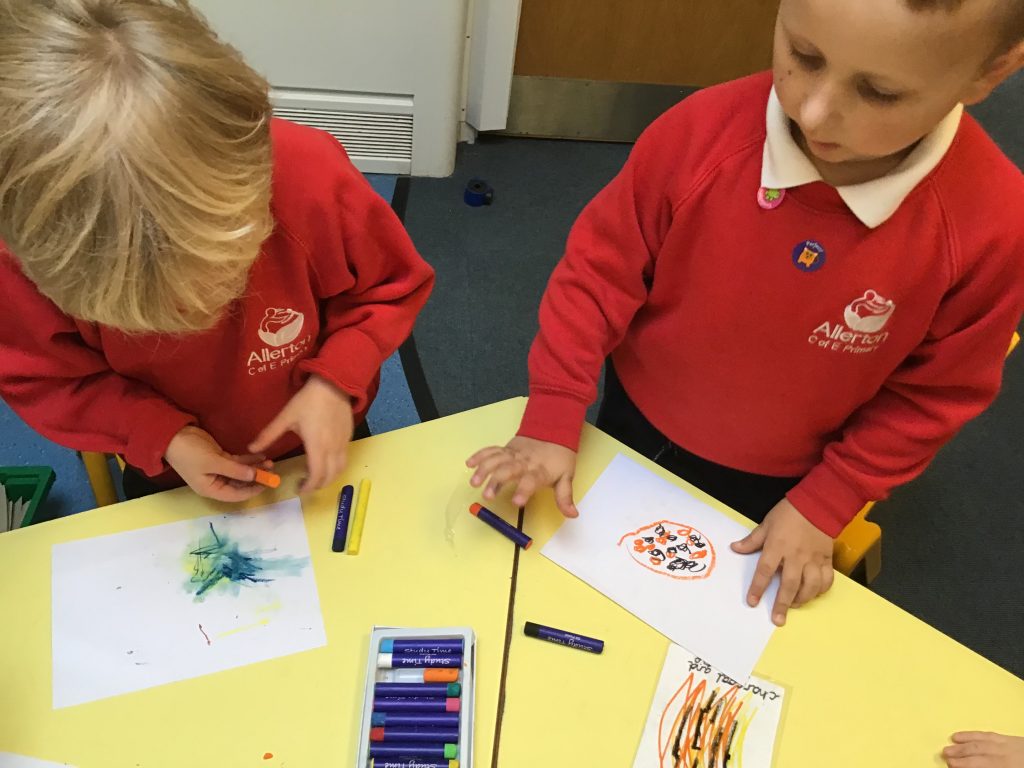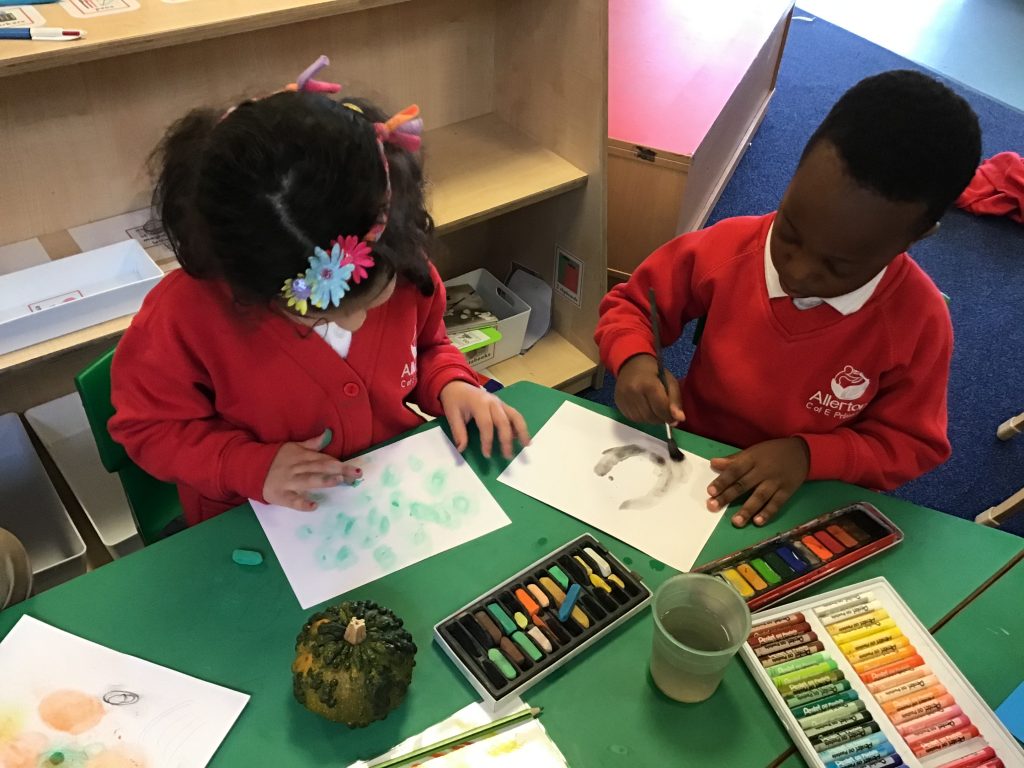Well done Year 6. Your lino prints, inspired by the deciduous and evergreen trees on Otley Chevin didn’t disappoint.
The process started with observation; recording what was seen through ‘gestural’ drawings and the exploration of sandwiching different drawing media together. Sketching large and allowing the pen to capture what the eyes saw proved hard for some of us, yet in letting go the autumnal scenes were created. Pastel, pencil crayon, charcoal, felt tip and watercolour were used sensitively to add colour.
By focusing on the outline of one of the tree’s leaves, we made a template. This was then used to make a string of leaves that were stitched into our sketchbook and immediately added depth. Oak, Rowan, Hawthorn, Holly, Sweet Chestnut and Beech were all evidenced across the cohort.
The background was a watercolour wash of an autumnal sky-grey slate and cool blues.
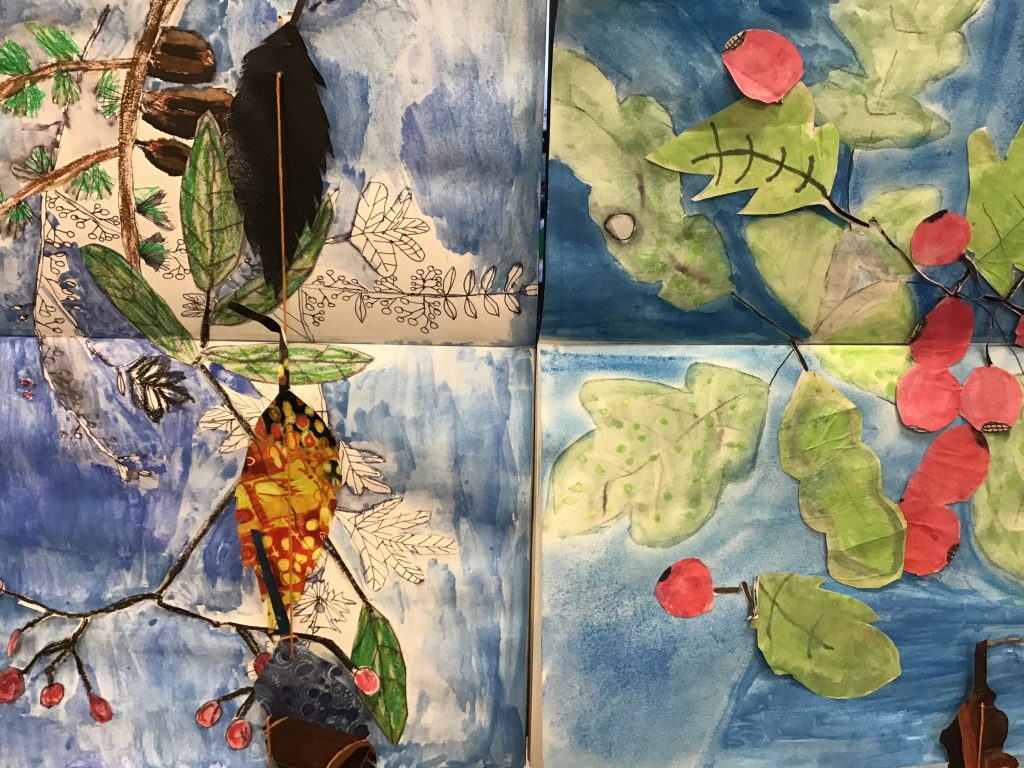
A viewfinder helped us discover a great design within our drawing, which would become the lino print. Transferring the design from the tracing paper onto the lino was somewhat tedious, especially when intricate, but we all persevered. The lines were finally there for cutting into and or around.
We watched the artist Mark Herald at work on his linocuts and saw how nature was his inspiration too.
Thankfully, fingers and thumbs remained behind the blade-on the whole! Focus and concentration, patience and control were integral when cutting away lino to leave the design. Our understanding of negative and positive space certainly improved.
By inking up a number of autumnal sky ‘backgrounds’ on the A5 lino, we reminded ourselves of the inking up process. We had also created a useful register for our lino printing. I was delighted to see Year 6 build up the layers of colour within their prints by cutting away some of their lino each time.
If you look carefully, you will identify the trees/leaves within each design. Each print is unique and demonstrates incredible skill and patience.

